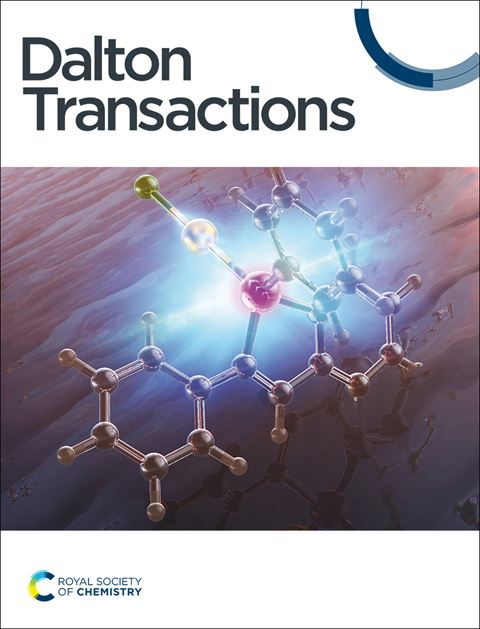二钌(II,III)和二铑(II,II)四乙酰桨轮配合物中 DNA/RNA 核碱基取代桥接配体的详细机理:离开乙酸酯的质子化至关重要
IF 3.5
3区 化学
Q2 CHEMISTRY, INORGANIC & NUCLEAR
引用次数: 0
摘要
双金属支架的桨轮复合物是生物无机化学领域新兴的金属制剂。在最常用的结构中,这些复合物由羧酸基装饰,因此可用于蛋白质或核酸靶标。在本研究中,我们进行了密度泛函研究,以评估在二钌和四乙酸二铑桨轮复合物中用一种螯合嘌呤(即腺嘌呤或鸟嘌呤)取代一种乙酸配体的可行机理路线。这项研究以原子尺度的分辨率证明了这一过程的相关阶段,并提供了所包含的决定速率的化学事件。因此,计算表明,醋酸脱络合以及随之而来的核碱基桥接是通过一个多步骤过程逐步进行的,其中包括离开醋酸的质子化过程。目前对这一机理的描述有助于设计和解释以四羧酸二钌和/或四羧酸二铑络合物与核碱基的反应为重点的实验,以及最终形成核碱基桥接络合物或拆解双金属结构的实验。本文章由计算机程序翻译,如有差异,请以英文原文为准。
Detailed mechanism of DNA/RNA nucleobase substituting bridging ligand in diruthenium (II,III) and dirhodium (II,II) tetraacetato paddlewheel complexes: Protonation of the leaving acetate is crucial
Paddlewheel complexes of bimetallic scaffolds are emerging metallic agents in the bioinorganic chemistry landscape. In the most commonly employed construct, these complexes are decorated by carboxylate moiety, prompting their possible deployment to target either protein or nucleic acid targets. In this study, density functional investigation was performed to assess viable mechanistic routes for the substitution of one acetate ligand with one chelating purine, i.e. adenine or guanine, in diruthenium and dirhodium tetraacetate paddlewheel complexes. This study evidenced the relevant stages of the process at an atomistic scale of resolution and provided for the encompassed rate-determining chemical events. Therefore, calculations indicated that the acetate decomplexation, as well as the concomitant nucleobase bridging proceeded gradually via a multistep process that included the leaving acetate protonation. The present picture of the mechanism is envisioned to be relevant to the design and interpretation of experiments focused on the reaction of diruthenium and/or dirhodium tetracarboxylate complexes with nucleobases and eventuating in the formation of either nucleobase bridged-complexes or in the dismantling of the bimetallic construct.
求助全文
通过发布文献求助,成功后即可免费获取论文全文。
去求助
来源期刊

Dalton Transactions
化学-无机化学与核化学
CiteScore
6.60
自引率
7.50%
发文量
1832
审稿时长
1.5 months
期刊介绍:
Dalton Transactions is a journal for all areas of inorganic chemistry, which encompasses the organometallic, bioinorganic and materials chemistry of the elements, with applications including synthesis, catalysis, energy conversion/storage, electrical devices and medicine. Dalton Transactions welcomes high-quality, original submissions in all of these areas and more, where the advancement of knowledge in inorganic chemistry is significant.
 求助内容:
求助内容: 应助结果提醒方式:
应助结果提醒方式:


